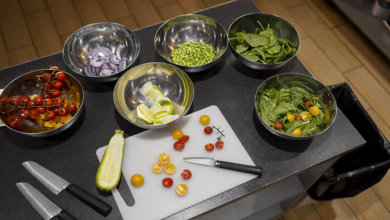Cooking: The Art and Science of Preparing Food

Cooking is one of the oldest and most essential human activities. It has evolved from a basic survival skill to a complex art form, with a wide variety of techniques and styles. Cooking is a blend of both art and science, as it involves understanding the properties of ingredients and how they interact with each other, as well as creativity and innovation in bringing flavors and textures together to create delicious dishes. In this article, we will explore the history of cooking, the different types of cooking methods, and the benefits of cooking at home.
The History of Cooking
Cooking has been a part of human history for thousands of years. The earliest forms of cooking were likely done over open fires, using basic tools such as sticks and stones to hold food while it was cooked. As human civilization developed, so did the methods and tools used for cooking. The invention of pottery and ceramics in ancient China and Egypt allowed for the creation of pottery and stoneware, and the development of agriculture led to the domestication of animals and the creation of dairy products. Cooking techniques and ingredients varied greatly throughout history and across cultures, leading to the diverse and rich culinary traditions we have today.
Types of Cooking Methods
- Cooking methods can be broadly categorized into dry-heat methods and moist-heat methods. Dry-heat methods include:
- Baking: Food is cooked in an enclosed space, such as an oven, using hot air to circulate and cook the food evenly.
- Roasting: Food is cooked on a roasting pan in an oven, using dry heat and often basting the food with its own juices or added fats.
- Grilling: Food is cooked over an open flame, either on a grill or a stovetop griddle.
- Frying: Food is cooked in hot oil, either in a pan on the stovetop or in a deep fryer.
Moist-heat methods include:
- Boiling: Food is cooked in hot water or a flavorful liquid, such as broth or wine.
- Steaming: Food is cooked by the steam generated by boiling water.
- Poaching: Food is cooked in a flavorful liquid that is heated to just below boiling.
- Braising: Food is first seared at high heat, then cooked in a covered pot with a small amount of liquid.
Benefits of Cooking at Home
Cooking at home has a number of benefits, including:
- Health: Cooking at home allows you to control the ingredients and the amounts used, which can lead to healthier meals. Home-cooked meals tend to be lower in sodium, sugar, and unhealthy fats than a restaurant or packaged meals.
- Cost-effective: Cooking at home is often cheaper than eating out or buying pre-made meals. It also allows you to make use of leftovers, reducing food waste.
- Social: Cooking can be a fun and social activity, whether you’re cooking with family or friends.
Creativity and self-expression:
Cooking at home allows you to experiment with new recipes and ingredients, and to express your creativity through food.
Cooking is an essential human activity that has evolved over thousands of years into a complex art form. It’s a blend of both art and science, involving understanding the properties of ingredients and how they interact with each other, as well as creativity and innovation in bringing flavors and textures together to create delicious dishes. There are many different types of cooking methods that can be used to prepare food, each with its own unique set of benefits. Cooking at home has many benefits, including health, cost-effectiveness, socialization, and self-expression
Read more about: cbdinfos




